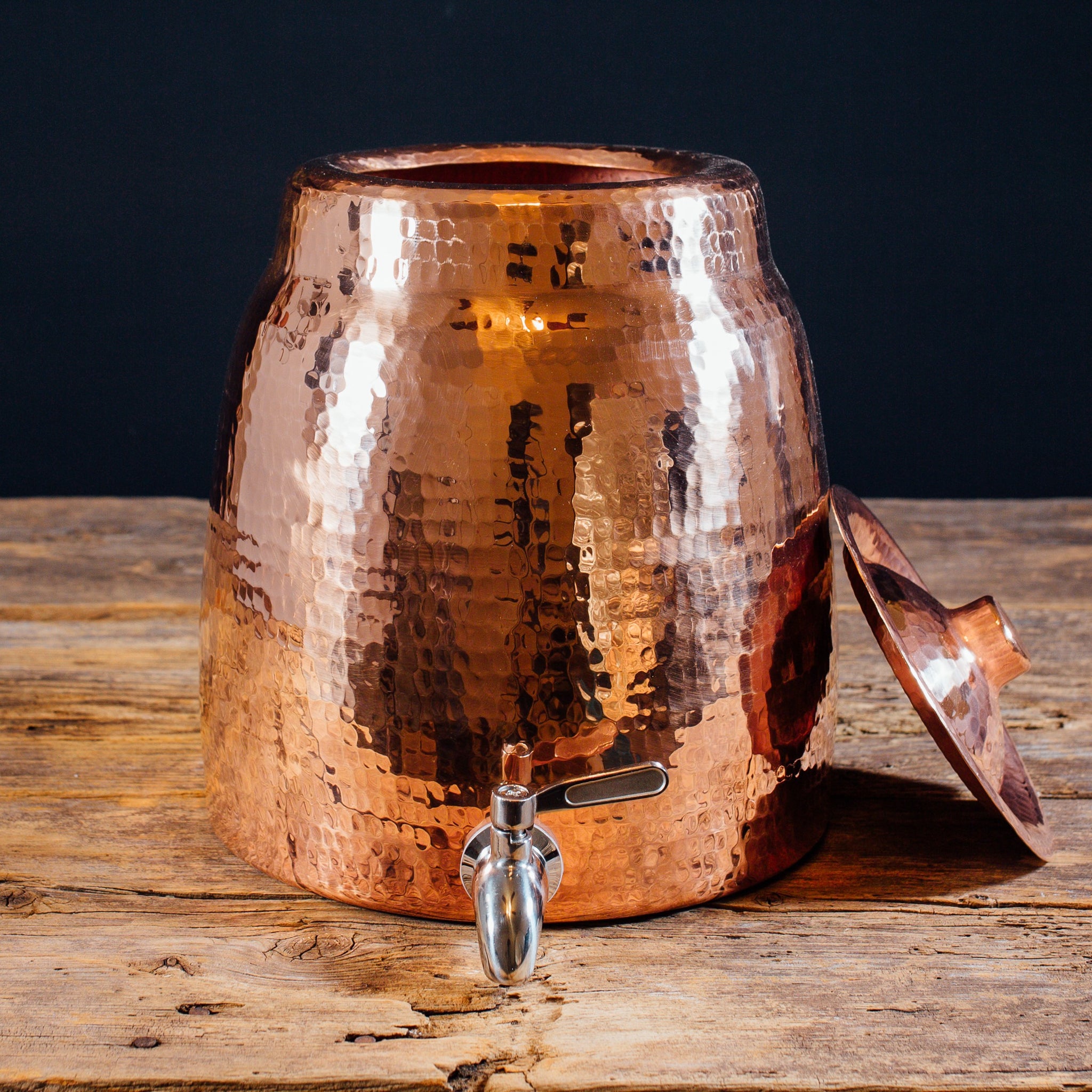Exactly How Copper Products Contribute to Lasting Practices in Numerous Markets
Copper items are significantly identified for their significant payments to lasting techniques across numerous fields, driven by their fundamental homes such as efficiency, toughness, and recyclability. In renewable resource systems, as an example, copper enhances the capability of solar and wind modern technologies, while its application in building decreases waste with longevity. Moreover, the product's antimicrobial characteristics offer appealing benefits in health care settings. As industries seek to adopt even more lasting practices, the function of copper might show essential in accomplishing ecological objectives. What ramifications might this have for future developments in sustainability?
Copper in Renewable Energy
Copper plays a vital role in the improvement of renewable energy modern technologies, offering as a vital conductor in various applications. Its exceptional electrical conductivity and resistance to corrosion make it an ideal material for electric wiring, which is crucial in solar panels, wind generators, and power storage space systems. In solar photovoltaic systems, copper is utilized in the interconnections and wiring, enabling effective power conversion from sunshine to electrical power.
In wind power, copper is essential to the generators and transformers that transform kinetic energy into electrical energy, making sure optimum performance and dependability. The need for electrical lorries (EVs) is raising, with copper being an essential element in batteries, motors, and billing facilities. The transition to EVs dramatically enhances the need for copper, as these vehicles normally utilize four times much more copper than traditional internal combustion engine vehicles.
As the globe looks for to reduce environment adjustment and shift to sustainable power sources, copper's duty comes to be progressively essential. The product not only boosts the efficiency and longevity of eco-friendly power systems however additionally sustains the more comprehensive objective of lowering greenhouse gas exhausts and advertising a lasting future.
Eco-Friendly Building And Construction Materials
In recent times, there has actually been a noteworthy change in the direction of the fostering of eco-friendly building materials in action to expanding ecological worries. This adjustment is motivated by the need for lasting options that reduce environmental footprints while maintaining architectural integrity and visual charm.
Copper, understood for its sturdiness and recyclability, has actually emerged as a principal in this sector. It can be used in roof, pipes, and electrical systems, adding to power performance and minimizing waste. Copper's longevity suggests less substitutes in time, more improving its sustainability profile.
Additionally, products such as bamboo, reclaimed timber, and recycled steel are obtaining appeal. These choices not only provide reduced ecological influence yet likewise advertise resource conservation. As building codes increasingly highlight sustainability, building contractors and architects are incorporating these products right into their tasks, promoting advancement in layout.
The boosting adoption of environmentally friendly construction materials mirrors a broader commitment to sustainability in the developed atmosphere. By prioritizing these materials, the construction sector can significantly reduce its carbon footprint, straighten with regulative standards, and sustain a healthier environment for future generations. This trend notes a pivotal step in the direction of a more sustainable future in construction.
Copper's Function in Medical care
Current studies have highlighted the considerable duty of copper in health care setups, specifically due to its antimicrobial properties. Copper surfaces have actually been shown to decrease the presence of microorganisms, including microorganisms and infections, by approximately 99.9% within a short period. This exceptional effectiveness makes copper a very useful material for high-touch surfaces in hospitals, such as doorknobs, bed rails, and IV posts, consequently adding to improved infection control procedures.
Along with its direct antimicrobial results, copper likewise contributes in the wider context of health center sustainability (Copper Products). By integrating copper right into medical tools and home furnishings, healthcare centers can reduce the incidence of healthcare-associated infections (HAIs), which not just improves client results yet likewise reduces the prices associated with extensive hospital remains and added therapies
In addition, copper's resilience and recyclability line up with lasting practices, enabling responsible resource administration. As health care systems significantly focus on both client security and ecological stewardship, the integration of copper items is coming to be extra widespread. This double advantage highlights copper's crucial contribution to a healthier, much safer, and more lasting healthcare setting.
Sustainability in Transportation

In addition, copper's sturdiness and rust resistance add to the longevity of transportation framework (Copper Products). In rail systems, for instance, copper components improve the dependability and efficiency of signaling and power systems, necessary for decreasing delays and power intake. Furthermore, copper's role in renewable resource systems, such as solar and wind, supports sustainable transport solutions by offering clean energy for electric transportation choices
Investments in copper technology not just foster sustainability however also stimulate economic development and work creation in green fields. As sectors aim to fulfill rigorous ecological regulations, the application of copper products in transport arises as a pivotal approach in attaining sustainability objectives and promoting a cleaner, extra effective future.
Copper and Round Economy
As the world increasingly accepts sustainability, the duty of copper in the circular economic situation becomes ever before more considerable. Copper's inherent buildings-- such as its sturdiness, recyclability, and conductivity-- placement it as an essential product in a resource-efficient economy. The circular economic climate aims to lessen waste and take full advantage of source usage with recycling and reusing materials, and copper excels in this respect.
The metal can be reused forever without loss of high quality, making it an optimal prospect for lasting practices throughout different markets, consisting of construction, electronic devices, and renewable resource. By recycling and recouping copper from end-of-life items, industries can considerably decrease the demand for virgin products, thereby decreasing ecological influences connected with mining and processing.
Additionally, the combination of copper into circular economic situation frameworks not just conserves resources but additionally promotes advancement. Businesses that focus on copper recycling contribute to a more sustainable supply chain, improving their competition while straightening with regulatory demands and customer choices for eco liable products.
Verdict
Finally, copper items substantially add to lasting practices across numerous sectors. Their crucial role in improving sustainable power innovations, promoting environment-friendly construction materials, supporting infection control in medical care, helping with lasting transportation, and symbolizing the concepts of a round economic climate underscores the convenience and significance of copper. By integrating copper right into different applications, industries can achieve better effectiveness, reduce ecological effect, and align with worldwide sustainability goals, inevitably promoting a much more lasting future.

Copper's excellent conductivity makes it a preferred material in electric vehicle (EV) systems, enhancing power performance and efficiency. Furthermore, copper's function in sustainable power systems, such as solar and wind, sustains sustainable transportation options by offering clean power for electrical transit options.
Their sites vital duty in enhancing renewable power technologies, promoting green construction materials, sustaining infection control in health care, assisting in sustainable transport, and personifying the principles of a circular economic climate highlights the convenience and significance of copper.
Comments on “From Art to Performance: The Many Applications of Unique Copper Products”